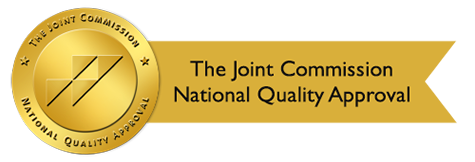Eye Movement Desensitization and Reprocessing Therapy (EMDR therapy) is a type of psychotherapy specifically targeted to help those who suffer from emotional distress, anxiety, or post-traumatic distress. The science behind EMDR therapy comes from something we all do, albeit unconsciously.
What is EMDR Therapy?
EMDR therapy replicates what happens in our brain when we go through our sleep’s rapid eye movement stage, typically known as REM sleep. During REM sleep, our brain is in its most active state, so you experience intense or bizarre dreams, your heart rate increasing, or your breathing quickening. Through EMDR therapy, a patient will undergo a series of phases where clinicians target triggering or distressing memories and change the patient’s reaction to them.
In contrast to the more commonly known methods of therapy, which mostly involve going into the details of a client’s trauma, this method lessens the need for this and doesn’t rely on the clinician’s interpretation of their memories or thoughts. Instead, the treatment transforms how the client processes traumatic memories, thus changing their reaction and feelings toward such completely.
EMDR therapy won’t require you to talk about your trauma in great detail but instead focus on your thought process for these experiences. The brain can continue and heal once your thought process has changed from being less distressed or traumatized.
The rehabilitation of psychological trauma happens in the same way as physical trauma. The process our body goes through is said to be similar to what happens in our mind; that is, both the body and mind have a natural healing process, both physically and mentally. EMDR treatment follows the same principle treating traumatic or distressing events as wounds or blockages that need to be removed so that the brain’s natural healing process can begin again.
EMDR Treatment: Is it Widely Recommended?
Worldwide, over 100,000 clinicians practice it, and millions have been successfully treated using it over the last 25 years. EMDR therapy has been proven to be an effective treatment for distressing day-to-day events to the more extreme issues such as anxiety, depression, panic disorders, and PTSD.
Many national and international organizations recognize how it has changed how therapy can be conducted and even our understanding of mental health. Some of these are the World Health Organization, American Psychological Association, and the International Society for Traumatic Stress Studies, to name a few.

When do you need an EMDR?
As studies for this type of treatment have developed over the years, EMDR therapy has become suitable for all types of emotional distress and trauma. In one study, combat veterans underwent EMDR therapy, and 77% of them no longer had PTSD after just 12 sessions.
In the same manner, this eye movement therapy has also been used for a myriad of mental health issues such as:
- Anxiety or panic attacks
- Chronic pains
- Depression
- Personality disorders
- Eating disorders
- Substance abuse or addiction
- Trauma or stress-related disorders
It has also worked for more common issues many individuals face in their day-to-day life such as low self-esteem, loneliness, grief or loss, and sleep disturbances. Essentially, EMDR therapy can be for everyone who’s had distressing experiences or memories hamper their everyday life and functioning.
How Does EMDR Work?
Just like our bodies, our brains typically have their own system of processing and healing trauma. The different parts of our brains work together to dispel our consciousness from any emotional distress or traumatic memories that obstruct our mental well-being and day-to-day activities. This includes creating alarm signals, analyzing events, categorizing and filing them in our memories. However, there comes a time when our brains can only do so much. Without external help, there is no resolution to such distressing conditions.
Our natural fight, flight, or freeze responses are all part of our body’s response to stress. However, when the suffering from a traumatic experience persists, disconcerting images, thoughts, and feelings can generate an overwhelming sensation. This develops the feeling of being stuck or stranded. EMDR therapy aids our brains in the processing of traumatic memories, allowing normal healing to resume.
Our stress response changes or gets resolved, although the traumatic event doesn’t really go away. Meaning, an effective EMDR treatment shows how we once perceive traumatic experiences changes completely. For instance, if you were a victim of abuse, memories of your abuse would have caused you pain, panic, or even paranoia. Your response to these events is processed and resolved through EMDR therapy. As a result, this will leave you with a changed conviction. You will feel that you are a strong survivor.
The Eight Phases of EMDR
EMDR therapy typically goes through a series of eight phases. In these eight phases, the client can process their memories, their present condition, and their future responses.
Phase 1: History-taking
The therapist and the client collaborate to set treatment plans. They will also take a thorough history and conduct an appropriate assessment. Past memories, current triggers, and future ambitions are all possible targets.
Phase 2: Preparing
The therapist ensures that the client has numerous distinct strategies for dealing with emotional distress. They explain the treatment and walk the client through the protocols. This will allow them to practice eye movement and/or other bilateral simulation components. They might give the client a variety of imagery and stress-reduction techniques that they can utilize in between sessions.
Phases 3-6: Targeting
This phase will recognize and analyze each memory components: image, cognition, affect, and bodily feeling. EMDR activates the memory targeted in the session in the next phases.
During EMDR treatment sessions, the Subjective Units of Disturbance (SUD) scale and the Validity of Cognition (VOC) scale assess changes in emotion and cognition. Both are utilized again with the established procedures during the therapy phase.
The therapist assists the client in assessing both the strength of positive beliefs and the severity of negative emotions. Following that, the client should concentrate on the image, negative thinking, and bodily sensations. This is done concurrently while EMDR processing utilizes bilateral stimulation sets. These sets may include eye movements, taps, and tones. Each client’s set should be distinct in terms of kind and length. At this stage, the EMDR client will be encouraged to observe whatever occurs naturally.
Phase 7: Logging
The therapist asks the client to keep a log during the week in phase seven. Document any related material that may arise. It can help the client remember and use the self-calming techniques they’ve learned in phase two.
Phase 8: Evaluating
Phase eight kicks off the following session. The eighth phase entails assessing the progress accomplished thus far. The treatment will process all linked past events, present situations that provoke the distress. This will also include future events that will need different reactions.
The therapist evaluates the client’s current psychological state. This will help check whether treatment effects have been maintained. The memories that may have emerged since the last session will also be determined. They work with the client to identify targets for the current session during phase eight. Aside from that, it will also help determine what memories may have emerged since the last session.

Why should you get an EMDR therapy?
Anyone can suffer from severe trauma. EMDR therapy is widely regarded as one of the most effective therapies for post-traumatic stress disorder (PTSD), and several organizations have recognized it as such. Adults of all ages who suffer from mental health problems can avail EMDR professional services. It can help process trauma and distress. One can also develop a better and healthier response to enables us to heal and grow continually It is for everyone and for every mental health problem.
More often than not, we believe that, like our bodies, our minds can naturally heal with time. However, severe or repeated trauma and distress can break down our systems. External intervention may be needed when our mental well-being is suffering, and the causes of such continually persist. One would need help to process and even accelerate the natural healing process. Through eye movement desensitization and reprocessing, our brain is able to use one of its own natural operations 一REM sleep.
Where to Get EMDR Therapy
EMDR therapy is offered all over the world. In California alone, there are over a thousand therapists and centers that offer such professional services. Aside from eye movement therapy, other mental health programs help clients go through and recover from experiences that have caused them great mental and emotional distress. What matters most is that you remember that you are not alone in this world. And there is always someone to help you out.
You are not alone in dealing with life’s issues; many others are going through similar hurts, struggles, and concerns, and many people are seeking assistance and maturing through therapy. If you or someone you know is suffering and in need of assistance, please call 562-263-4733 or visit us at 3939 Atlantic Ave, Suite 102 Long Beach, CA 90807.




